Sunflower
 From Nwe
From Nwe | Sunflower | ||||||||||||
|---|---|---|---|---|---|---|---|---|---|---|---|---|
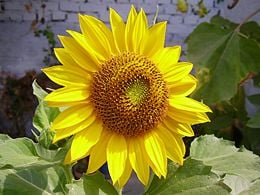 |
||||||||||||
| Scientific classification | ||||||||||||
|
||||||||||||
|
|
||||||||||||
| Helianthus annuus L. |
Sunflower is the common name for any of the plants of the genus Helianthus of the flowering plant family Asteraceae (known as the aster, daisy, or sunflower family). It also commonly is used specifically in reference to the annual plant Helianthus annuus, the common sunflower, which is characterized by a long stem and a large flowering head (inflorescence) with large seeds. The term sunflower also refers to this plant's seed-like fruit (commonly but incorrectly called the seeds) or the encased, edible, true seeds.
The adaptation that allows sunflowers to advance their own individual purpose of reproduction, the "flower head," also contributes larger value for the ecosystem and for humans. Ecologically, sunflowers are copious nectar producers, providing food for pollinating bees, while the seeds and leaves provide food for such animals as birds, insects, and squirrels. For humans, all parts of the plant are used. The seeds of the common sunflower are eaten and are a source of a valuable oil (one of the most important vegetable oils). The leaves and stalks are used as fodder for livestock, and the flowers yield a yellow die. Overall, the common sunflower, with its flowers of various colors (yellow, maroon, orange, etc.), is a popular ornamental plant for gardens.
Description
The family Asteraceae, to which Helianthus belongs, is known as the aster, daisy, or sunflower family. It is a taxon of dicotyledonous flowering plants. The family name is derived from the genus Aster and refers to the star-shaped flower head of its members, epitomized well by the daisy. In addition to the sunflower and daisy, other well-known members of the family include lettuce, chicory, globe artichoke, safflower, chrysanthemums, ragwort, and dandelion.
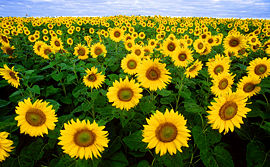
Plants belonging to the Asteraceae share all the following characteristics (Judd et al. 1999). None of these traits, taken separately, can be considered synapomorphic.
- The inflorescence is an involucrate capitulum (flower head)
- Tubular/disc florets are actinomorphic, ligulate/ray florets are zygomorphic
- Anthers are syngenesious, i.e. with the stamens fused together at their edges, forming a tube
- The ovary has basal arrangement of the ovules
- One ovule per ovary
- The calyx (sepals) of the florets are modified to form a pappus, a tuft of hairs, which often appears on the mature fruit
- The fruit is an achene
- In the essential oils Sesquiterpenes are present, but iridoids are lacking.
The most common characteristic of all these plants is an inflorescence or flower head; a densely packed cluster of many small, individual flowers, usually called florets (meaning "small flowers"). Plants in the family Asteraceae typically have one or both of two kinds of florets. The outer perimeter of a flower head like that of a sunflower is composed of florets possessing a long strap-like petal, termed a ligule; these are the ray florets. The inner portion of the flower head (or disc) is composed of small flowers with tubular corollas; these are the disc florets.
The genus Helianthus L. comprises more than fifty species of sunflowers, all of which are native to North America, with some species (particularly Helianthus annuus, common sunflower, and Helianthus tuberosus, Jerusalem artichoke) cultivated in Europe and other parts of the world as food crops and ornamental plants.
Members of this genus usually are tall, annual or perennial plants, growing to a height of 60-390 centimeters. The rough and hairy stem is branched in the upper part. The petiolate leaves are dentate and often sticky. The lower leaves are opposite, ovate, or often heart-shaped. The upper leaves are alternate and narrower.
They bear several to many wide, terminal capitula (flower heads), with bright yellow ray florets at the outside and maroon disc florets inside. These flower heads follow the direction of the sun, going from east to west during the day.
Sunflower species
- Helianthis agrestis : Southeastern Sunflower
- Helianthus angustifolius : Swamp Sunflower
- Helianthus annuus : Sunflower, Mirasol
- Helianthus anomalus : Western Sunflower
- Helianthus argophyllus : Silverleaf Sunflower
- Helianthus arizonensis : Arizona Sunflower
- Helianthus atrorubens
- Helianthus bolanderi : Serpentine Sunflower
- Helianthus californicus : California Sunflower
- Helianthus carnosus : Lakeside Sunflower
- Helianthus ciliaris : Texas Blueweed
- Helianthus cinereus
- Helianthus cusickii : Cusick's Sunflower
- Helianthus debilis : Cucumberleaf Sunflower
- Helianthus debilis ssp. cucumerifolius : Cucumberleaf Sunflower
- Helianthus debelis ssp. debilis : Beach Sunflower, Dune Sunflower
- Helianthus debilis ssp. silvestris : Cucumberleaf Sunflower
- Helianthus debilis ssp. tardiflorus : Cucumberleaf Sunflower
- Helianthus debilis ssp. vestitus : Cucumberleaf Sunflower
- Helianthus decapetalus : Thinleaf Sunflower
- Helianthus deserticola
- Helianthus divaricatus
- Helianthus eggertii : Eggert's Sunflower
- Helianthus floridanus : Florida Sunflower
- Helianthus giganteus
- Helianthus glaucophyllus : Whiteleaf Sunflower
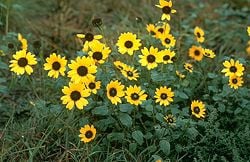
- Helianthus gracilentus : Slender Sunflower
- Helianthus grosseserratus
- Helianthus heterophyllus : Variableleaf Sunflower
- Helianthus hirsutus
- Helianthus laciniatus : Alkali Sunflower
- Helianthus laetiflorus
- Helianthus laevigatus : Smooth Sunflower
- Helianthus longifolius : Longleaf Sunflower
- Helianthus maximiliani : Maximillian Sunflower
- Helianthus microcephalus : Small Woodland Sunflower
- Helianthus mollis
- Helianthus multiflorus
- Helianthus neglectus : Neglected Sunflower
- Helianthus niveus
- Helianthus niveus ssp. canescens : Showy Sunflower
- Helianthus niveus ssp. tephrodes : Algodones Sunflower
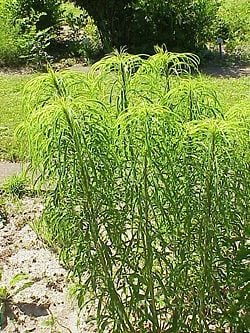
- Helianthus nuttallii
- Helianthus nuttallii ssp. nuttallii : Nuttall's Sunflower
- Helianthus nuttallii ssp. parishii : Parish's Sunflower
- Helianthus nuttallii ssp. Rydbergii : Rydberg's Sunflower
- Helianthus occidentalis : Fewleaf Sunflower
- Helianthus occidentalis ssp. occidentalis : Fewleaf Sunflower
- Helianthus occidentalis ssp. plantagineus : Fewleaf Sunflower
- Helianthus paradoxus : Paradox Sunflower
- Helianthus pauciflorus
- Helianthus pauciflorus ssp. pauciflorus : Stiff Sunflower
- Helianthus pauciflorus ssp. subrhomboideus : Stiff Sunflower
- Helianthus petiolaris
- Helianthus petiolaris ssp. fallax : Prairie Sunflower
- Helianthus petiolaris ss. petiolaris : Prairie Sunflower
- Helianthus porteri : Porter's Sunflower
- Helianthus praecox
- Helianthus praecox ssp. hirtus : Texas Sunflower
- Helianthus praecox ssp. praecox : Texas Sunflower
- Helianthus praecox ssp. runyonii : Runyon's Sunflower
- Helianthus praetermissus : New Mexico Sunflower
- Helianthus pumilus : Little Sunflower
- Helianthus radula : Rayless Sunflower
- Helianthus resinosus : Resindot Sunflower
- Helianthus salicifolius : Willowleaf Sunflower
- Helianthus schweinitzii : Schweinitz's Sunflower
- Helianthus silphioides : Rosinweed Sunflower
- Helianthus simulans : Muck Sunflower
- Helianthus smithii : Smith's Sunflower
- Helianthus strumosus : Paleleaf Woodland Sunflower
- Helianthus tuberosus : Jerusalem Artichoke, Sunchoke
Helianthus annuus
Helianthus annuus, the common sunflower, is an annual plant native to the Americas, with a large flowering head (inflorescence). The stem of the flower can grow as high as 3 meters tall, with the flower head reaching up to 30 centimeters in diameter with the "large" seeds. It is the most widely distributed on the sunflower species, being introduced from the Americas into Europe in 1510 by the Spanish and now grown on all continents except Antarctica (Bender and Bender 2005). It is an important source of edible oil and the seeds are used for food as well.
Sunflowers most commonly grow to heights between 2.5 and 3.5 meters (8 - 12 feet), with a rough, hairy stem. Scientific literature reports, from 1567, that a 12 meter (40 feet), traditional, single-head, sunflower plant was grown in Padua. The same seed lot grew almost 8 meters (24 feet) at other times and places (e.g. Madrid). Much more recent feats (past score years) of over 8 meters (25 feet) have been achieved in both Netherlands and Ontario, Canada. The common sunflower also has large (up to 12 inches long), broad, toothed, leaves.
Sunflowers are extremely variable, with the species encompassing both wild and domesticated plants, and with the domesticated plants varying from a single stem with a very large head to plants with a few branches and somewhat smaller heads (although larger than the wild variety).
What is usually called the flower is actually a head (formally composite flower) of numerous flowers (florets) crowded together. The outer flowers are the ray florets and can be yellow, maroon, orange, or other colors, and are sterile. The florets inside the circular head are called disc florets. The disc florets mature into what are traditionally called "sunflower seeds," but are actually the fruit (an achene) of the plant. The true seeds are encased in an inedible husk.
The florets within this cluster are arranged spirally. Typically, each floret is oriented toward the next by approximately the golden angle, producing a pattern of interconnecting spirals where the number of left spirals and the number of right spirals are successive Fibonacci numbers. Typically, there are 34 spirals in 1 direction and 55 in the other; on a very large sunflower you may see 89 in one direction and 144 in the other.
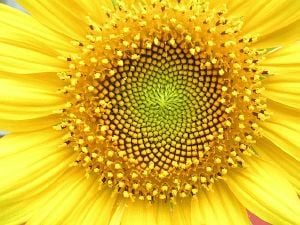
Heliotropism
Sunflowers in the bud stage exhibit heliotropism. At sunrise, the faces of most sunflowers are turned towards the east. Over the course of the day, they move to track the sun from east to west, while at night they return to an eastward orientation. This motion is performed by motor cells in the pulvinus, a flexible segment of the stem just below the bud. As the bud stage ends, the stem stiffens and the blooming stage is reached.
Sunflowers in the blooming stage are not heliotropic anymore. The stem has frozen, typically in an eastward orientation. The stem and leaves lose their green color.
The wild sunflower typically does not turn toward the sun; its flowering heads may face many directions when mature. However, the leaves typically exhibit some heliotropism.
Cultivation and uses
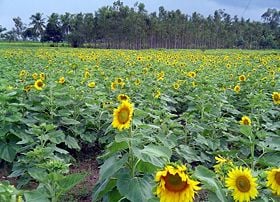
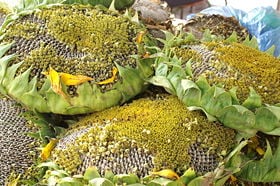
Sunflowers are native to the Americas. There is some debate about where the sunflower was first domesticated. The earliest known examples of a fully domesticated sunflower were found at the Hayes site in Tennessee and date back to around 2300 B.C.E. There were also other remains found at the Olmec site of San Andrés dating some time before 2100 B.C.E. The Incas used the sunflower as an image of their sun god. Gold images of the flower, as well as seeds, were taken back to Europe early in the sixteenth century.
To grow well, sunflowers need full sun. They grow best in fertile, moist, well-drained soil with a lot of mulch. In commercial planting, seeds are planted 45 centimeters (1.5 feet) apart and 2.5 centimeters (1 inch) deep.
Sunflower "whole seed" (fruit) are sold as a snack food after roasting within heated ovens, with or without salt added. Sunflowers can be processed into a peanut butter alternative, Sunbutter, especially in China, Russia, the United States, the Middle East, and Europe. It is also sold as food for birds and can be used directly in cooking and salads.
Sunflower oil, extracted from the seeds, is used for cooking, as a carrier oil (used to dilute essential oils and absolutes before they are applied to the skin, such as in soap), as a lubricant, as an ingredient in paint, and to produce biodiesel. A range of sunflower varieties exist with differing fatty acid compositions; some "high oleic" types contain a higher level of healthy monounsaturated fats in their oil than even olive oil. During the eighteenth Century, the use of sunflower oil became very popular in Europe, particularly with members of the Russian Orthodox Church because sunflower oil was one of the few oils that was not prohibited during Lent.
The portion of the plant remaining after the seeds have been processed for oil is used as a livestock feed.
Some recently developed cultivars have drooping heads. These cultivars are less attractive to gardeners growing the flowers as ornamental plants, but appeal to farmers, because they reduce bird damage and losses from some plant diseases. Sunflowers also produce latex and are the subject of experiments to improve their suitability as an alternative crop for producing hypoallergenic rubber.
For farmers growing other crops, the sunflower is considered a weed. The wild variety will grow unwanted in corn and soybean fields and can have a negative impact on yields.
Mathematical model

A model for the pattern of florets in the head of a sunflower was proposed by H Vogel. This is expressed in polar coordinates
- ,
- ,
where θ is the angle, r is the radius or distance from the center, and n is the index number of the floret and c is a constant scaling factor. It is a form of Fermat's spiral. The angle 137.5° is related to the golden ratio and gives a close packing of florets. This model has been used to produce computer graphics representations of sunflowers (Prusinkiewicz and Lindenmayer 1990).
Flower formation
-

1. The first stage of the flower formation
-

2. The flower is still covered, but faces the sun
-

3. The flower is nearly completely exposed
-

4. The flower is completely exposed
Gallery
-

Sunflowers in Wilkesboro, North Carolina
-

Sunflowers in Manila, Philippines
-

Bumble bee sampling Sunflower nectar
-

Lone sunflower about 2 m (6 ft, 6') tall
-
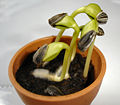
Sunflower seedlings, just three days after germination
-

Sunflower Profile
-
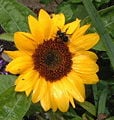
Sunflower and pollinator
-

Sunflower (French:Tournesol) from MediaWiki logo
-

Large Russian Sunflower
-

Close-up of sunflower.
-

The Netherlands, June 2006
-

Fruiting head
-

Sunflower seeds in many variations and sizes.
-

Sunflower close-up.
-

Red sunflowers.
-

Hybrid Sunflower
-

Small Sunflower
-

Sunflower Macro
References
ISBN links support NWE through referral fees
- Judd, W. S., C. S. Campbell, E. A. Kellogg, and P. F. Stevens. 1999. Plant Systematics: A Phylogenetic Approach. Sinauer Associates, Sunderland, MA. ISBN 0878934049.
- Pope, K., M. E. Pohl, J. G. Jones, D. L. Lentz, C. von Nagy, F. J. Vega, and I. R. Quitmyer. 2001. Origin and environmental setting of ancient agriculture in the lowlands of Mesoamerica]. Science 292(5520): 1370 - 1373.
- Prusinkiewicz, P., and A. Lindenmayer. 1990. The Algorithmic Beauty of Plants. Springer-Verlag. ISBN 9780387972978.
- Shosteck, R. 1974. Flowers and Plants. An International Lexicon with Biographical Notes. Quadrangle/The New York Times Book Co. ISBN 0812904532.
- Wood, M. 2002. Sunflower rubber?. USDA Agricultural Research Service. Retrieved September 24, 2007.
Credits
New World Encyclopedia writers and editors rewrote and completed the Wikipedia article in accordance with New World Encyclopedia standards. This article abides by terms of the Creative Commons CC-by-sa 3.0 License (CC-by-sa), which may be used and disseminated with proper attribution. Credit is due under the terms of this license that can reference both the New World Encyclopedia contributors and the selfless volunteer contributors of the Wikimedia Foundation. To cite this article click here for a list of acceptable citing formats.The history of earlier contributions by wikipedians is accessible to researchers here:
- Sunflower history
- Helianthus history
- Asteraceae history
The history of this article since it was imported to New World Encyclopedia:
- History of "Sunflower"
Note: Some restrictions may apply to use of individual images which are separately licensed.
↧ Download as ZWI file | Last modified: 02/04/2023 03:48:06 | 12 views
☰ Source: https://www.newworldencyclopedia.org/entry/Sunflower | License: CC BY-SA 3.0
 ZWI signed:
ZWI signed:

 KSF
KSF